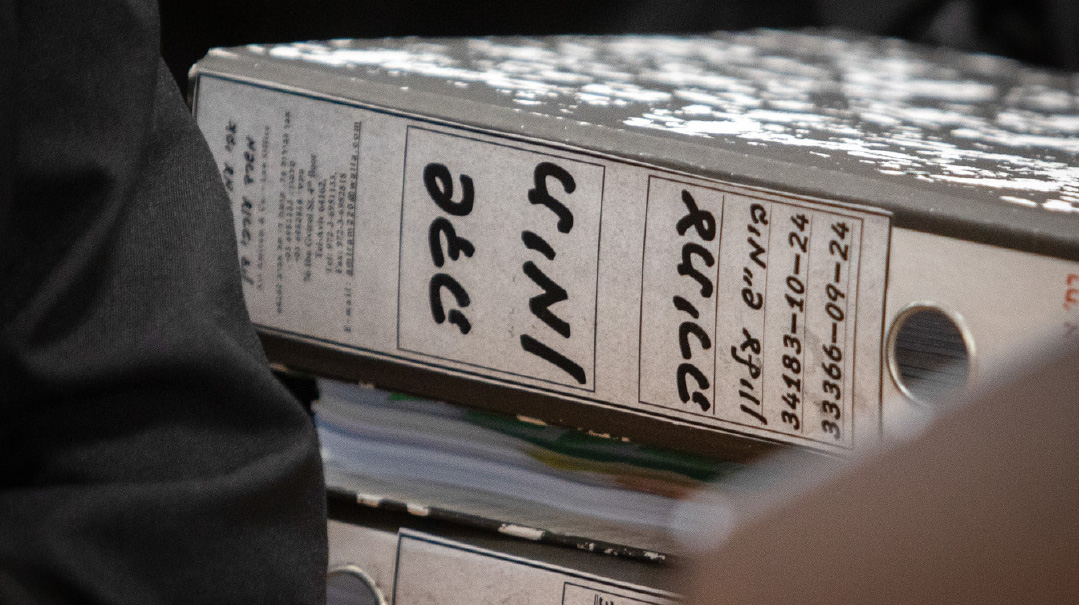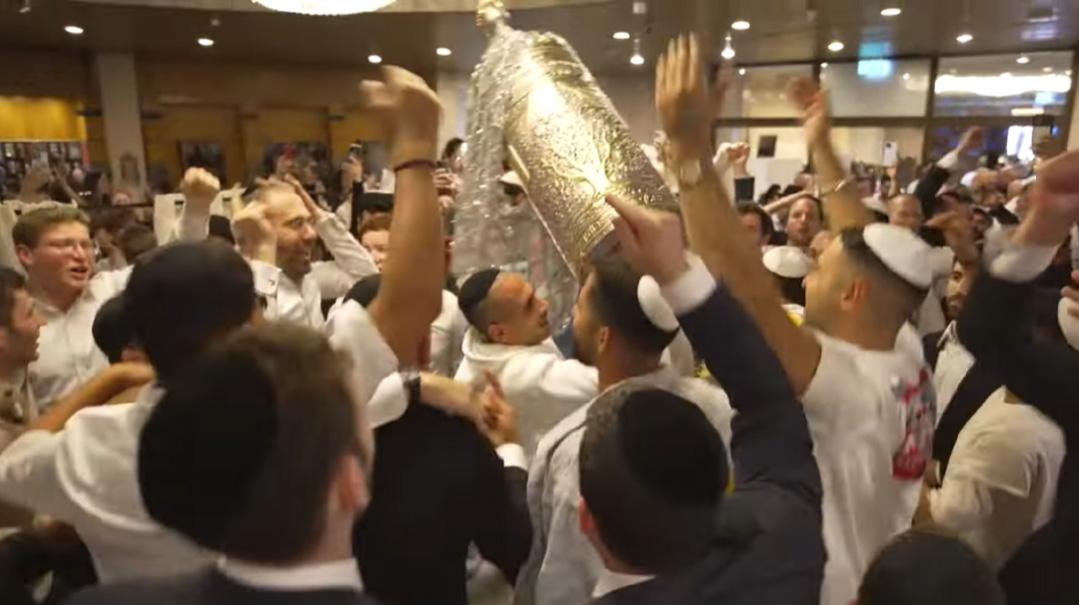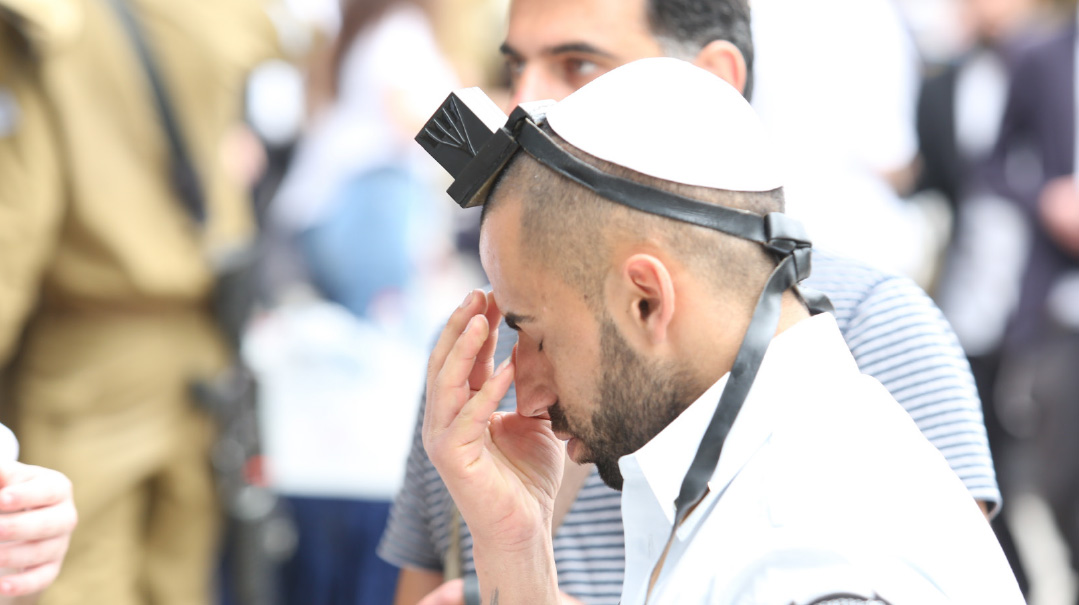Time to Get in Touch with Ourselves

At no time in the year is the need for awareness of one’s own unique self more crucial than as we approach the Yom Hadin

MY senior year in college, I took a course in the history of autobiography. It turned out to be the most important course of my college career, not only because I developed a relationship with Professor Karl Weintraub, one of the demigods of the University of Chicago history faculty, but because the course was really an inquiry into the development of the concept of individuality, a term with which I must confess I was entirely unfamiliar.
According to Professor Weintraub, the full-blown concept of individuality is found for the first time only in the autobiography of Johann Wolfgang von Goethe (1749-1832), generally considered the greatest writer in the German language, for only in that work do we find for the first time an awareness that had the author been born 25 years earlier or later, or in a different place, he would have been a completely different person. In other words, the totality of the circumstances of his life helped make him the unique individual that he was.
LONG BEFORE GOETHE, the concept of individuality — the idea that each person has a quality of character that distinguishes him or her from every other person ever born or who will ever be born — is found throughout Torah and in divrei Chazal. The distinct nature of each person and his or her unique mission in Hashem’s plan, and the consequences that flow from those facts, constitute the subject of Nurture Their Nature by Rabbis Yosef Lynn and Jack Cohen, based on the shiurim of Rabbi Beryl Gershenfeld. That work, writes Rav Aharon Feldman, Rosh Yeshivas Ner Yisroel, in his haskamah, brings a “breathtaking array of writings by Jewish sages and startling insight into their teachings [on the topic] of self-knowledge as the key to reaching each individual’s potential.” (See “Rediscovering Torah Individuality,” Issue 874). And Rav Ahron Lopiansky begins his new work Ben Yeshivah: Pathway of Aliyah with an extensive discussion of Torah sources on individuality.
Chazal noted that every coin stamped in the same press is identical. Yet every human being, despite each one being stamped b’tzelem Elokim — in the image of G-d — is different both externally and in his essential nature, i.e., partzufeihem v’dei’oseihem shonim.
Both the Maharal and the Vilna Gaon describe one of the basic three tasks of man in this world as self-completion, the discovery and development of his essential self. The very first nevuah given to Avraham Avinu — and thus the beginning of the saga of the Jewish People — begins, “lech lecha — journey to yourself,” for your own benefit.
Avraham Avinu may well have had the highest degree of self-awareness of any person who ever lived. For Chazal tell us that he recognized his Creator mei’atzmo — from himself. And as Rav Yerucham Levovitz explained, he had such an awareness of the most essential level of his being — the cheilek Eloka mimaal, the Divine breath that Hashem breathed into his nostrils — that he could derive the Torah. For the Torah is the expression of Hashem’s Will, and therefore naturally resonates with the Divine within us.
The term mishe’amdo al daaso — from the day that he became self-aware (in Rav Lopiansky’s translation) — appears not infrequently in the Gemara as marking a distinct stage in a person’s development: the point at which he no longer views himself as an extension of his parents, but rather as a distinct being with his own thoughts, emotions, nature. That nature, the Vilna Gaon writes, is innate and only capable of change within a certain range. Thus, the most basic Torah instruction to an educator is: chanoch l’naar al pi darko — educate the youth according to his nature (Mishlei 22:6).
Nothing deprives a person of a sense of achievement or accomplishment more than the absence of a well-developed sense of self, as being a unique being. Without that self-awareness, he is just going along with the stream, following the accepted societal path, but not expressing himself.
And that can be true even if the activities in which he is engaged are themselves positive. In prewar Europe, the yeshivah bochur was frequently a figure of ridicule, and every bochur who chose to go to yeshivah was going against the stream. As a consequence, any young man who set off for yeshivah had to make a personal decision and have a clear vision of why he wanted to devote himself to Torah learning.
Today, in the chareidi world, long-term Torah learning has become the norm. Just as a college degree is the norm for every middle-class high school graduate in America, so too is years of long-term Torah learning, both before and after marriage, the accepted norm for those growing up in the chareidi world.
The result is that there are today many times the number of yeshivah and kollel students that there were in Europe before the war. But few would argue that the quality of learning is higher, for it does not require the same individual commitment and clarity of decision-making as it once did.
Rav Eliyahu Eliezer Dessler used to say that which we do because someone else taught us to do so, or because it was the “done thing” — i.e., mi’limudo — confers no merit. That merit only comes when we make the learning or mitzvah our own, the product of our exercise of our own bechirah.
It was in part to counteract the diminution of Torah learning to a social norm, and to restore the sense of excitement and anticipation with which he once set out for Yeshivas Mir in Yerushalayim right out of high school, when that entailed returning home only every few years and communication was far more time-consuming and cumbersome than today, that Rav Lopiansky wrote his new sefer.
The opening chapter begins with a fascinating Gemara. The Gemara (Pesachim 68b) relates that Rav Sheishes would review all of Torah every 30 days. When he had completed the cycle, he would proclaim publicly, “Be pleased, my soul, be pleased, my soul. It is for your sake that I have studied.” The Gemara asks whether his personal benefit can really have been the principal motivation of his study, for doesn’t it say that but for the study of Torah day and night, the world would cease to exist. The Gemara answers, “Yes, but the initial motivation is for oneself.”
Rav Lopiansky explains, based on the Vilna Gaon, that for the maximum appreciation of Torah learning, one must see that learning as the result of one’s own decision and one’s recognition that the Torah is the ultimate means to actualize the deepest recesses of one’s soul, the part untouched by any desire for the approval of others or any other motivation, the Divine aspect of one’s soul that resonates with the Torah.
AT NO TIME in the year is the need for awareness of one’s own unique self more crucial than as we approach the Yom Hadin. The great mashgiach Rav Shlomo Wolbe used to say that half the work of Elul is discovering the nature of the ani (I) in the words “ani l’dodi v’dodi li — I am to my beloved and my beloved is to me.”
That is true on many levels. On Rosh Hashanah, we crown Hashem as melech over us, and pray that He will soon be recognized as the King over the entire world. But only one who is exercising his unique bechirah, making his own choices, can crown HaKadosh Baruch Hu. Only one who could choose to do otherwise is capable of crowning HaKadosh Baruch as King by acknowledging Him as such. In short, only one with a well-developed sense of himself as exercising his own free will and not just going along with the opinion of others can proclaim Hashem King. One is enough. But that one must be a choosing being.
What each of us seeks on Yom Hadin is an additional year to fulfill our mission. But to even make that request, we must first have some idea of what our mission is, what it is we are trying to achieve. Without that, we have no idea what we are asking, how we are doing, or what we need to do better.
The sound of the shofar reminds us of the primordial breath of the Divine that Hashem blew into Adam Harishon’s nostrils. For as Chazal put it, one Who blows, blows of Himself.” But though each of us partake of that breath, each of us expresses the Divine within us in a different fashion. Our individual relationship with Hashem is also different, as the beginning of Shemoneh Esreh reminds us: Elokei Avraham is not Elokei Yitzchak is not Elokei Yaakov. But in order for the relationship to Hashem to take its individual form, there must first be a conscious individual to enter into that relationship, and, in particular, one who is aware that he or she contains within a Divine soul.
Achieving such self-awareness is one of life’s central tasks and most difficult. It cannot be achieved without deep contemplation. Yet contemplation, self-reflection of any type, is increasingly beyond our comprehension. Not only does social media render us prey to the opinions of others, not the urgings of our own souls, but even when it is not polluting our minds, it distracts us from any serious ability to think.
It is normal for teenagers today to spend four hours a day on social media, and seven hours a day is not uncommon. Those statistics, of course, are based on the general community and not our own. But the differences are too often ones of degree and not kind.
And when one gets in the habit of being distracted on a regular basis, that too easily becomes the default mode.
Most of us could benefit from a resolve to create time to think seriously about who we are and what makes us unique. And if it is too late for this year, it is not too late to beseech our Merciful Father for time to think deeply for next year.
No one can discover our individuality for us, for no one has the same access to our inner beings that we do. Let us take the time to do so.
Kesivah v’chasimah tovah to all.
(Originally featured in Mishpacha, Issue 1031. Yonoson Rosenblum may be contacted directly at rosenblum@mishpacha.com)
Oops! We could not locate your form.







